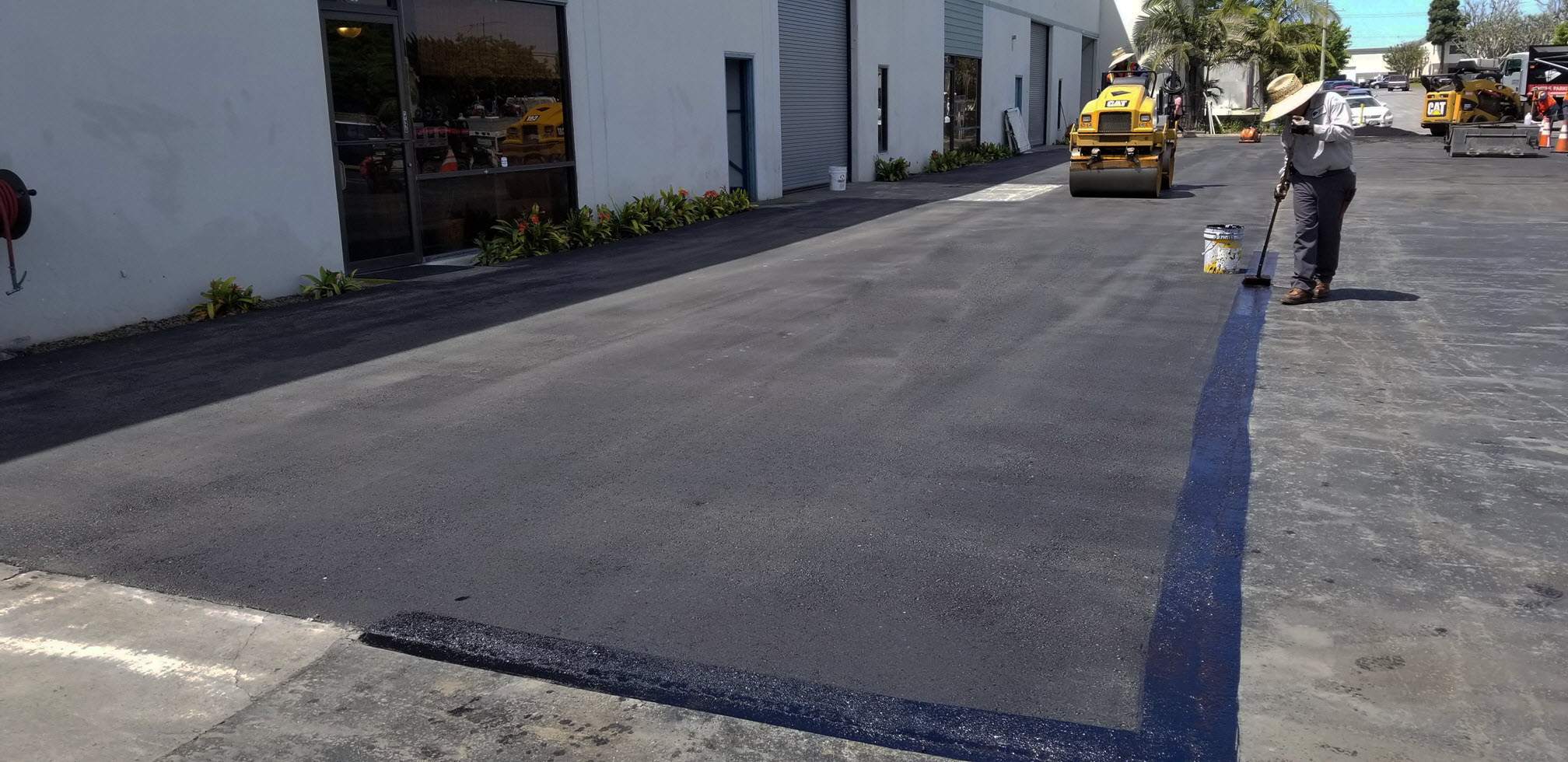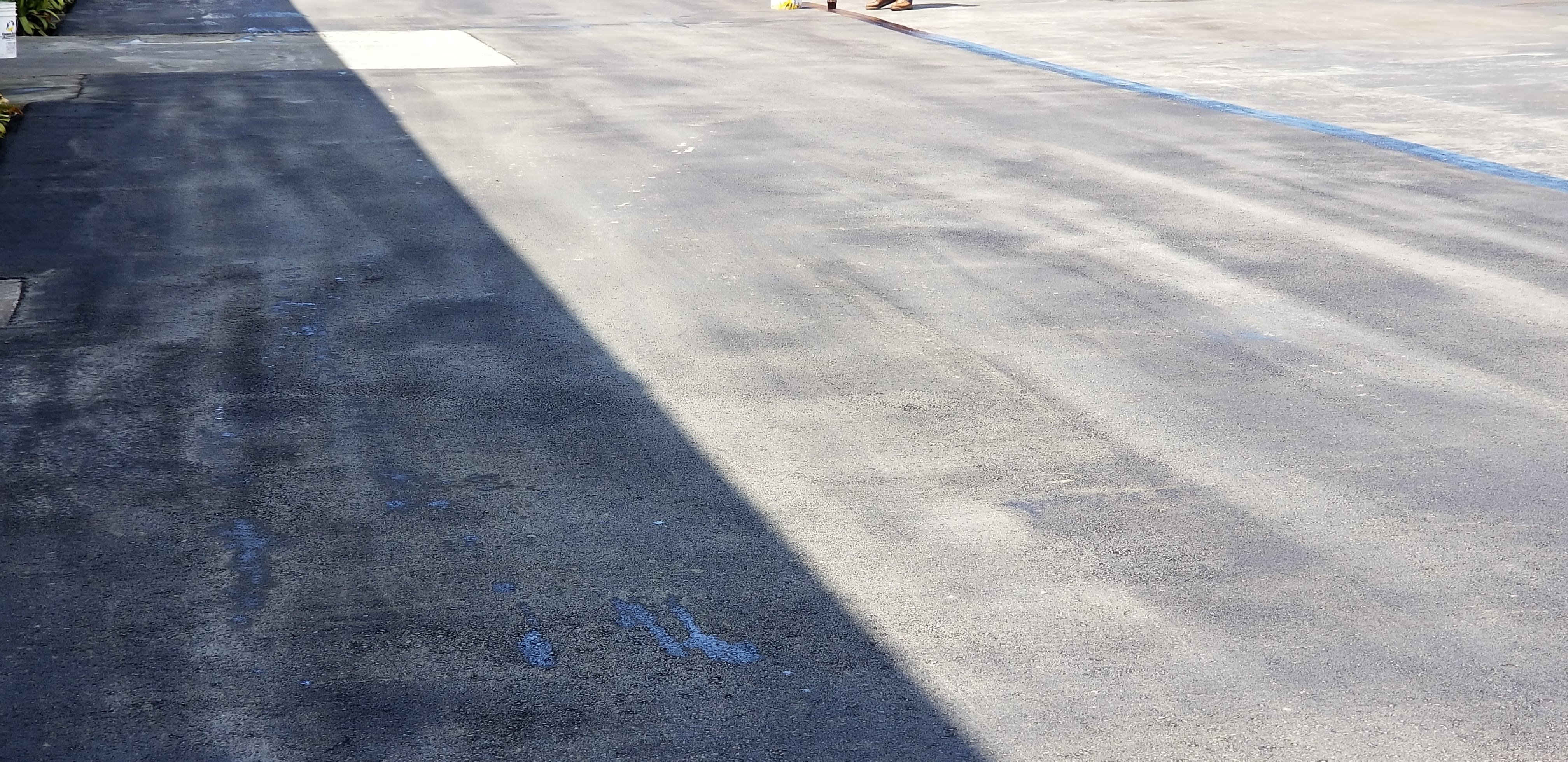If you have resurfaced your lot or part of it, then one obvious question is how long before you can drive on the "fresh" asphalt.
First of all, there is often confusion between "curing" and "drying."

Asphalt takes six to twelve months to fully cure, and remains a little more susceptible to damage for that time. However, it takes 48 to 72 hours to "dry" enough for foot and vehicle traffic. This is for new asphalt. Resurfaced asphalt can be dry in as soon as a few hours. Another measure is that it is dry enough when it has cooled (pros install asphalt as what we call "hot mix," which is an aggregate of stone or sand in asphalt slurry) to the ambient temperature.
Asphalt drying time is partially dependent on the weather. Extreme heat can delay the drying process, as well as cause the asphalt to soften again before it can fully cure. Sometimes spraying it with water can help at that point. Because of this it is better not to schedule asphalt repairs for temperatures above 100 degrees Fahrenheit. Spring or early summer is ideal, remembering that asphalt cannot be laid if it is raining. In cold weather, the asphalt can start to harden before the crews have finished working on it, leaving you with lumps or bumps in the pavement that could only be fixed by starting over.
Parking in exactly the same spot repeatedly on uncured asphalt can cause dents where the wheels rest. This is more of a problem with driveways, but can also be an issue if your lot has assigned parking spots. Make sure people know that they should try not to park in exactly the same space every day to help avoid this.
If you need to resurface the entire lot then you will want to time it carefully. Depending on the size of your project, it is often better to resurface the lot in sections so the rest can still be used to park on. Note that while asphalt does dry at night, it may dry faster when in direct sunlight.

Simple patching of asphalt, as mentioned, can dry much faster, but it is best to err on the side of caution and keep the area barricaded for a day or so. Remember that if the fresh asphalt is damaged it will need to be repaired or replaced, which is much more of a problem than reducing access to the lot. Also remember that tight turns tend to damage asphalt. If only employees use the lot, you should remind them to drive a little bit more carefully on the new asphalt. If not, it might be worth putting up signs to reduce the damage and rutting which then has to be patched or repaired.
It is highly recommended that you apply a seal coat to newly surfaced asphalt. If you choose to do so, you should wait thirty days. The sealer also takes 48 to 72 hours to dry enough for people to drive on it, but will greatly increase the life of the asphalt surface as well as reduce the overall cost of future asphalt repairs. As a note, new paint can also soak into the surface if applied within 30 days, although it may not be legally or practically feasible to wait.
If applying sealer or paint, choose a warm, sunny day, checking the temperature maximums and minimums on the paint. Paint and sealer both essentially require sunlight to dry properly. A light wind is also helpful, as long as it is not interfering with the work.
The short version is that if you are repaving part of your lot, you should be ready to close it to traffic for as much as 72 hours, and you should be ready to ensure you have enough alternatives for proposed demand, especially if it affects disabled parking spaces or entrances to the lot. Encourage people who have rented a specific space to vary their parking for a while, and avoid applying paint or sealer for 30 days. You should always arrange to have your repaving done at the right time of year.
If in doubt, contact Empire Parking Lot Services. We are your parking lot professionals and can give you advice on when you should get your repaving done and how long you should wait under the specific conditions. Driving on asphalt that is not dry can damage the new surface, creating cracks or ruts and shortening its life, so it is worth planning to keep that part of the lot closed for the required period of time. Please check out our "Anatomy of a Parking Lot" blog for a more in-depth view of what makes up a parking lot.




Comments